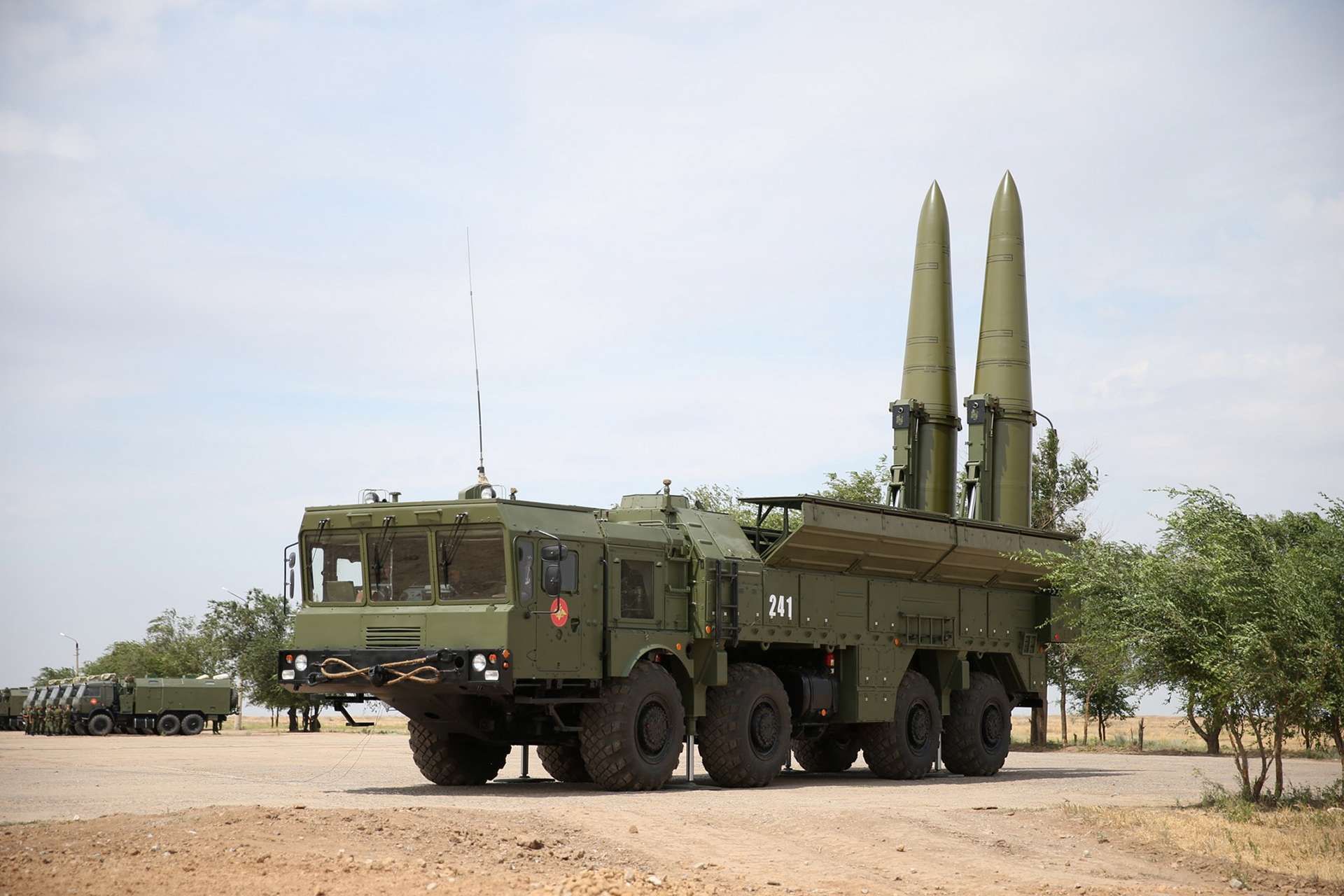Breaking News
Ukraine confirms successful tests of Hrim-2 tactical missile for future deployment against Russia.
On October 22, 2024, Yehor Chernev, a People's Deputy and head of Ukraine's NATO Parliamentary Assembly delegation, announced that concrete results from the use of Ukrainian-made ballistic missiles (likely the Hrim-2) would soon be revealed. This statement was made during a televised appearance, where Chernev highlighted that while some rockets had already been tested, there were ongoing issues related to component availability. He assured that results would soon be visible to both Ukraine and Russia.
Follow Army Recognition on Google News at this link

Zelensky announced the successful test of Ukraine’s first locally produced ballistic missile during the "Ukraine 2024. Independence" forum, although the details of the missile remain classified. (Picture source: Ukrainian MoD)
The development and production of rockets within Ukraine have been advancing steadily. Ukraine has made notable progress in missile technology, as President Zelensky previously emphasized. On August 27, 2024, during the "Ukraine 2024. Independence" forum, Zelensky announced the successful test of what is likely Ukraine’s first locally manufactured ballistic missile (probably the Hrim-2), marking a significant milestone in defense capabilities. While the details of the missile remain classified, this event signaled a major step toward self-reliance in missile production, reducing Ukraine’s dependency on Western weapons amid its ongoing conflict with Russia.
Ukraine’s missile program has produced several notable systems, including the Hrim-2 (also known as Grim-2, Grom-2, Thunder, or OTRK Sapsan), a short-range ballistic missile system developed to rival Russia’s Iskander missile. Designed to replace the Soviet-era Tochka-U missiles, the Hrim-2 has a range of up to 700 km for Ukrainian forces, surpassing its previous range of 450 to 500 km. The export version of the Hrim-2, however, has a range of 50 to 280 km. One of the missile’s key features is its evasive capabilities, including an aeroballistic flight path that allows it to bypass modern air defense systems like Russia’s S-300 and S-400. The missile system’s versatility, enabling the launch of both ballistic and cruise missiles, makes it effective for a wide range of applications, from air defense to coastal operations.
The ongoing conflict with Russia has heightened the urgency for Ukraine to develop long-range weapons. Zelensky has repeatedly called on Western allies to lift restrictions on the use of long-range arms, emphasizing that recent Russian bombardments have intensified. Ukrainian forces have taken bold actions, including an offensive in Russia's Kursk region earlier this year, to compensate for their lack of long-range weaponry. Zelensky has highlighted the need for stronger retaliatory capabilities in response to Russian missile attacks, which often originate from regions like Kursk and Belgorod.

The Russian Iskander is a similar short-range ballistic missile to Ukraine's first locally produced Hrim-2, which Zelensky announced as successfully tested during the "Ukraine 2024. Independence" forum. (Picture source: Russian social media)
Ukraine's missile program continues to evolve, with the Hrim-2 system playing a pivotal role in the country’s defense strategy. Although the exact details of the Hrim-2's capabilities remain undisclosed, its current range for the Ukrainian Army is believed to be around 700 km, providing the ability to strike deep into Russian-held territory. This is a significant increase from its original export version's range of 280 km, giving Ukraine the capacity to hit key strategic targets, including military infrastructure in Crimea. Ukrainian sources have linked the system to several successful strikes on Russian military targets. In one instance, the missile was reportedly used to target a Russian airfield in Crimea, further demonstrating its operational effectiveness.
Details about the missile remain scarce, with Brigadier General Serhiy Baranov stating it is being improved and that its effects will soon be felt by Russian forces. Despite Russia's claims of intercepting these missiles and destroying related production facilities, the Ukrainian Ministry of Defense has expressed optimism about future developments. They indicate that the country’s missile production capabilities will continue to expand, with potential ranges extending to 1,000 km. These efforts are entirely funded by the national budget, reflecting Ukraine’s commitment to achieving self-sufficiency in military production.
The missile’s design also reflects flexibility in deployment, as it can be launched from mobile platforms and is capable of carrying various warheads. This adaptability allows it to serve both defensive and offensive roles in the conflict, targeting supply routes, command centers, and other critical Russian military assets. According to military experts, having a missile system like the Hrim-2 enables Ukraine to conduct more independent military operations, potentially without needing approval for Western-supplied long-range weapons.


























